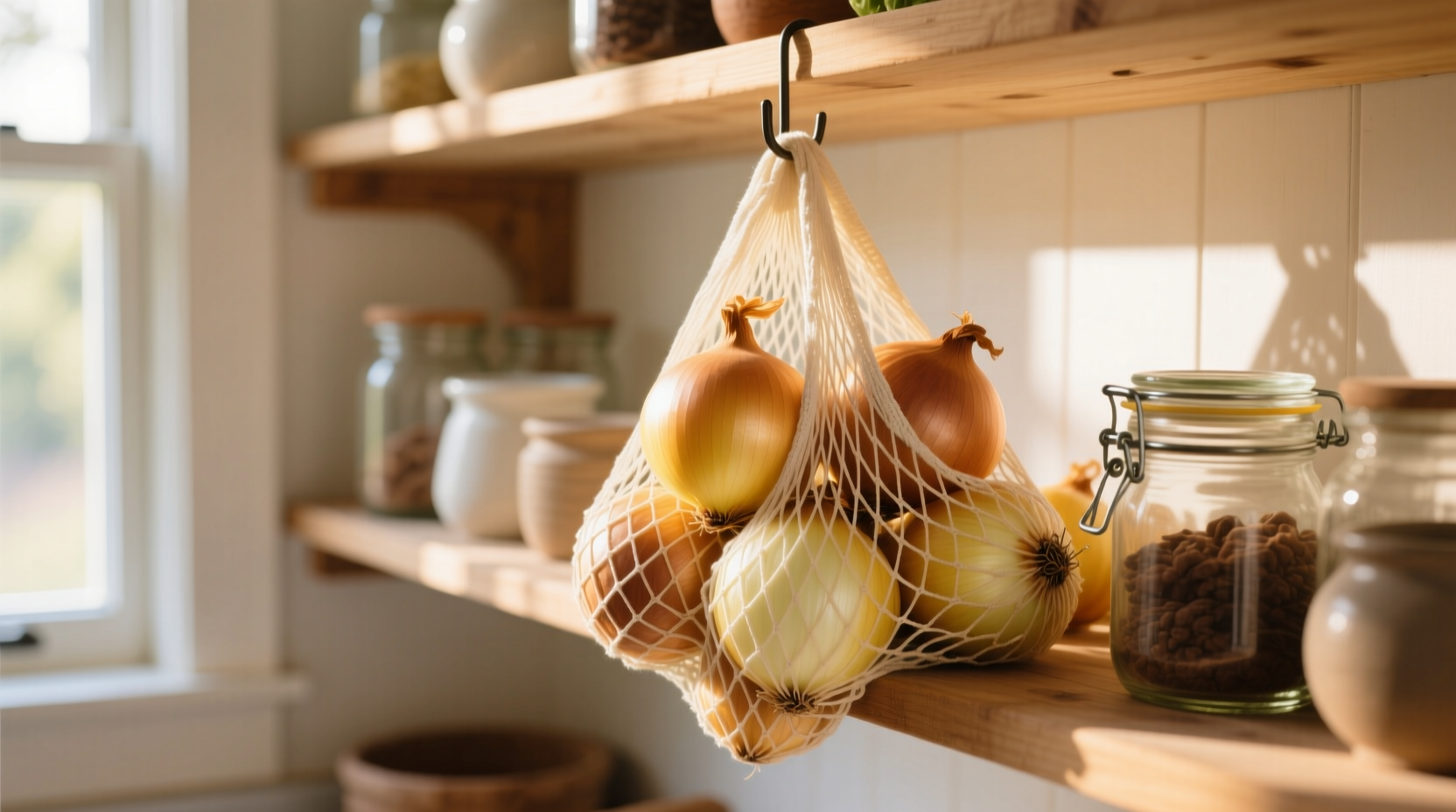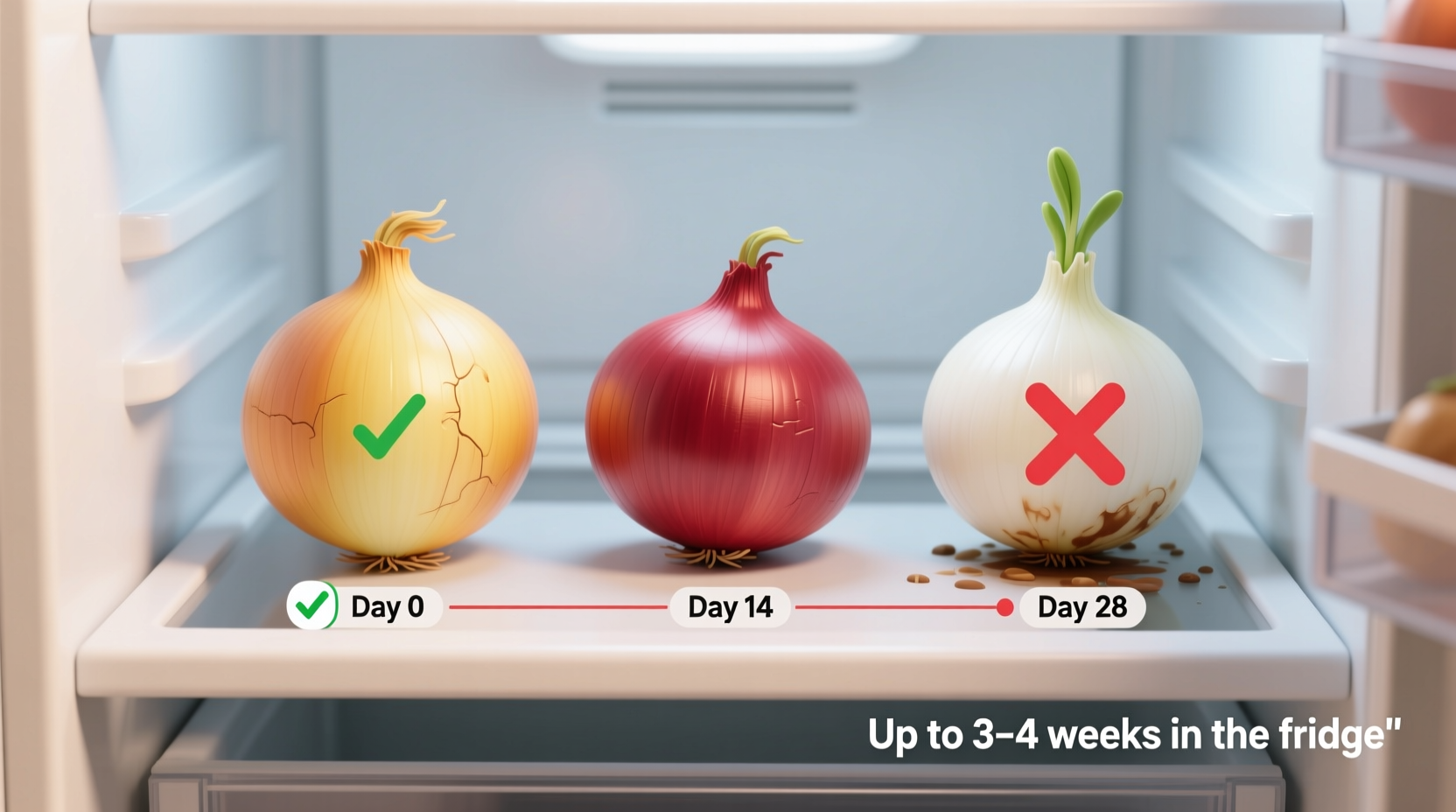Whole onions last 1-2 months in a cool, dry pantry—not the fridge. Once cut, store them in an airtight container in the refrigerator for 7-10 days. Red, yellow, and white onions follow these guidelines, while sweet onions like Vidalias last only 1-2 weeks refrigerated.
Ever pull a mushy, sprouting onion from your fridge and wonder when it crossed the line from fresh to spoiled? You're not alone. Proper onion storage directly impacts flavor, safety, and your grocery budget. Let's cut through the confusion with science-backed storage methods that keep onions tasting crisp and sweet.
Why Onion Storage Matters More Than You Think
Onions aren't just flavor builders—they're nutritional powerhouses packed with antioxidants and vitamin C. But improper storage triggers enzymatic reactions that degrade quality and create off-flavors. The USDA confirms that temperature fluctuations accelerate spoilage in allium vegetables, making consistent storage conditions critical.
Whole Onions: The Pantry Reigns Supreme
Contrary to popular belief, whole onions belong in your pantry—not the refrigerator. Refrigeration introduces moisture that promotes mold growth and causes onions to become mushy. Cornell University's Food Science Department explains that onions maintain optimal quality at 45-55°F (7-13°C) with 65-70% humidity—conditions most home refrigerators can't provide without damaging texture.
| Onion Type | Pantry Storage | Refrigerator Storage | Freezer Storage |
|---|---|---|---|
| Yellow Onions | 1-2 months | 3-4 weeks (cut only) | 6-8 months (sliced) |
| Red Onions | 3-4 weeks | 2-3 weeks (cut only) | 4-6 months (sliced) |
| Sweet Onions | 1-2 weeks | 1-2 weeks | 3-4 months (sliced) |
| Green Onions | Not recommended | 1-2 weeks | 2-3 months |
When Refrigeration Becomes Necessary
There are three exceptions where refrigeration makes sense:
- Cut onions: Store in airtight containers for 7-10 days
- Green onions: Trim roots, place in water-filled jar, cover with plastic bag
- High-humidity climates: When pantry humidity exceeds 70%
The National Onion Association notes that refrigeration changes the starch structure in cut onions, which is why they become softer over time. This enzymatic process can't be reversed—once refrigerated, onions shouldn't return to pantry storage.
Spotting Spoilage: Beyond the Obvious Signs
While mold and sliminess are clear indicators, early spoilage shows subtle signs:
- Texture changes: Slight softening at the neck indicates moisture migration
- Color shifts: Yellow onions developing pink hues signal oxidation
- Odor development: A sour smell means fermentation has begun
According to FDA food safety guidelines, discard onions showing any signs of spoilage. Consuming spoiled onions can cause foodborne illness, particularly in immunocompromised individuals.
Pro Storage Techniques That Actually Work
Follow these chef-tested methods to maximize freshness:
Pantry Storage System
Store whole onions in mesh bags or open baskets in a dark, ventilated space. Never store near potatoes—their ethylene gas accelerates onion sprouting. The University of California's Agriculture Department recommends placing onions on wooden racks to maintain airflow around all sides.
Refrigeration Protocol for Cut Onions
- Chill airtight containers in the fridge first
- Place paper towel at container bottom to absorb moisture
- Store cut surfaces down to minimize oxidation
- Change paper towel daily for extended storage

Avoid These Common Onion Storage Mistakes
Even experienced cooks make these errors:
- Storing in plastic bags: Traps moisture causing accelerated spoilage
- Keeping in original grocery netting: Too loose for pantry, too tight for fridge
- Washing before storage: Introduces excess moisture
- Storing near heat sources: Causes premature sprouting
Food science research from the Journal of Food Quality shows that onions stored in perforated containers maintain firmness 30% longer than those in sealed containers. The key is balancing moisture retention with airflow—a delicate equilibrium many home cooks miss.
When to Freeze Onions
Freezing works best for cooked onions or pre-cut portions:
- Sauté onions first to preserve flavor compounds
- Flash-freeze chopped portions on baking sheets
- Store in vacuum-sealed bags with air removed
- Use within 6 months for best quality
Raw frozen onions become mushy when thawed but work well in cooked dishes. The National Center for Home Food Preservation confirms that freezing doesn't destroy nutrients but alters cellular structure—making frozen onions unsuitable for raw applications.











 浙公网安备
33010002000092号
浙公网安备
33010002000092号 浙B2-20120091-4
浙B2-20120091-4